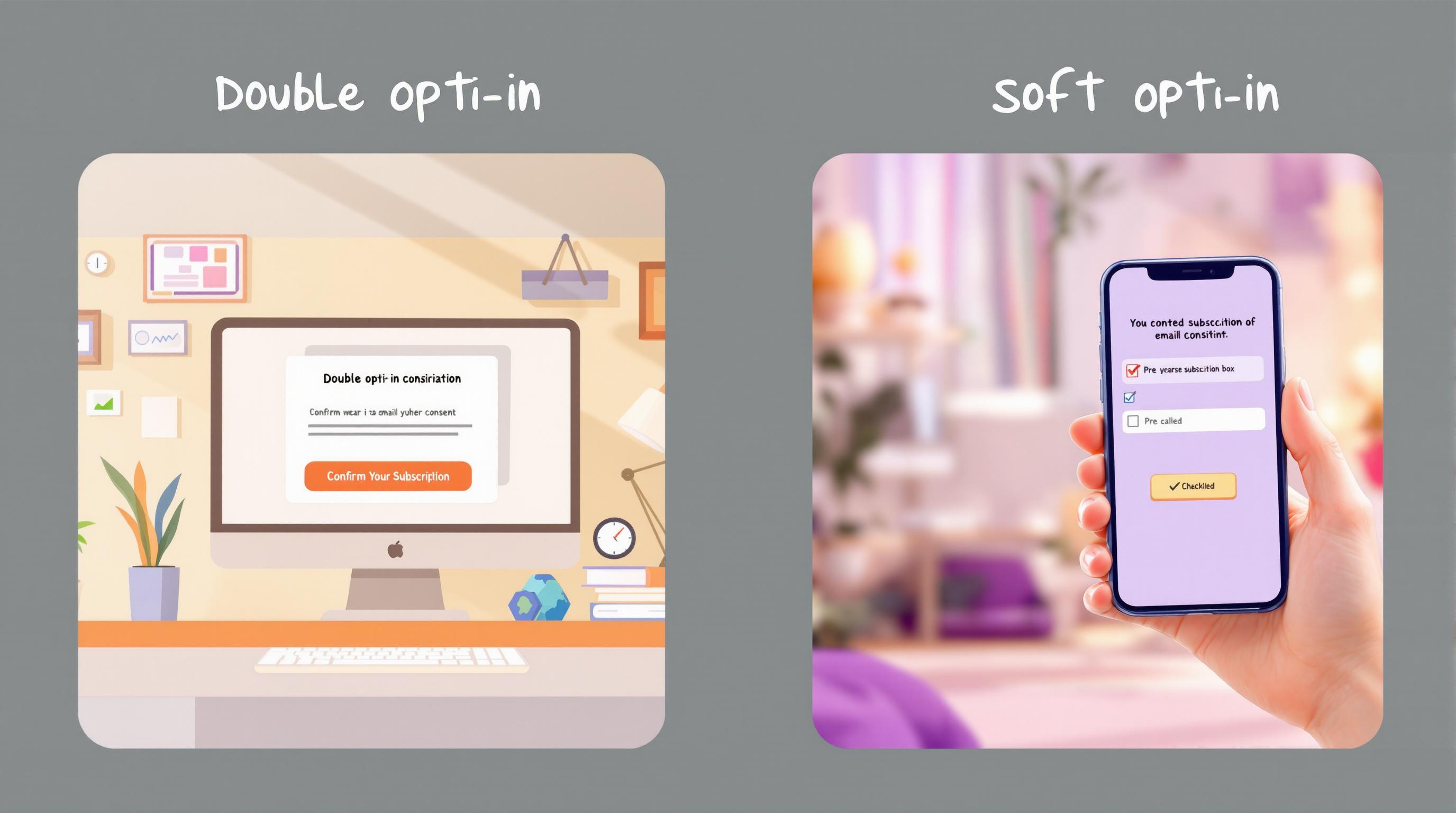Key Takeaways:
- What is Churn Risk Segmentation? It categorizes customers based on their likelihood to disengage, using metrics like purchase history, email interactions, and website activity.
- Why It Matters: Segmented email campaigns can increase revenue by up to 760% compared to non-segmented ones.
- How to Use It: Tailor email strategies for high-risk, medium-risk, and low-risk customers with personalized offers, reminders, and loyalty rewards.
- Tools and Tactics: Use AI tools for automation and dynamic segmentation to keep campaigns timely and relevant.
- Impact: Cutting churn by just 5% can increase profitability by 25-125%.
By combining behavioral data with personalized email strategies, businesses can retain more customers and improve engagement.
Understanding Churn Risk Behavioral Segmentation
Methods of Behavioral Segmentation
Behavioral segmentation for churn risk focuses on analyzing customer actions and engagement trends. By leveraging data, businesses can group customers based on how likely they are to leave.
Here are some key methods:
| Behavioral Indicator | Tracking Method | Risk Assessment |
|---|---|---|
| Purchase History | Monitor transaction frequency and spending patterns | A drop in purchases may indicate a risk of churn |
| Email Engagement | Evaluate open rates, clicks, and time spent reading emails | Low engagement with emails suggests waning interest |
| Website Activity | Analyze browsing habits and time spent on the site | Less activity often signals reduced interest |
| Customer Service Interactions | Track the number and type of support requests | Frequent complaints or fewer interactions may point to dissatisfaction |
These methods combine to offer a detailed picture of customer behavior. For instance, when analyzing email engagement, it's important to go beyond open rates. Metrics like time spent on emails and link clicks provide deeper insights into customer interest.
Criteria for Identifying High-Risk Customers
Spotting high-risk customers requires a structured evaluation of their behavior.
Engagement Decline Patterns
- Noticeable drop in email open rates over two months
- No visits to the website in the last 30 days
- Reduced interaction with promotional materials
Changes in Purchase Behavior
- Longer gaps between purchases
- Lower average order value
- Preference for buying only discounted items
"Data analytics is crucial in identifying high-risk customers by providing insights into customer behavior" [2].
To make this process effective, businesses should use dynamic segments that update automatically based on real-time customer behavior. This ensures retargeting efforts are timely and relevant, increasing the chances of re-engagement. For example, personalized email campaigns can address specific factors that put a customer at risk.
Keeping customer data current and regularly reviewing performance metrics are essential for refining segmentation strategies. Once high-risk customers are identified, businesses can focus on creating targeted campaigns to win them back.
Applying Churn Risk Segmentation in Email Retargeting
Strategies for Segmenting Retargeting Campaigns
To make email retargeting work, segment your audience based on churn risk triggers. Timing is everything - customers are more likely to respond when their intent is still fresh. For example, sending a cart abandonment email within three hours can significantly boost engagement rates.
| Risk Level | Messaging Focus | Retargeting Approach |
|---|---|---|
| High Risk | Stress urgency | Limited-time offers to create a sense of urgency |
| Medium Risk | Highlight value | Educational content paired with moderate discounts |
| Low Risk | Build relationships | Loyalty rewards and relationship-focused messaging |
"Data analytics is vital in providing insights into customer behavior and identifying high-risk customers. It helps in creating targeted and personalized campaigns that are more likely to reengage at-risk customers" [1][3].
Once you've segmented your audience, the next step is to craft emails that address each group's specific needs and concerns.
Creating Personalized Emails
Personalization isn't just about adding someone's name to an email - it’s about understanding their preferences and past behavior to create content that truly connects.
Here’s what makes personalized emails effective:
- Dynamic Content and Targeted Offers: Tailor your email content and promotions based on what the customer has previously browsed or bought.
- Social Proof: Use testimonials or product recommendations that align with the recipient's interests. For example, include a review from someone who bought a similar product.
Research from Omnisend highlights that segmenting customers by how recently they’ve purchased and the value of their orders is a smart way to re-engage high-risk customers [2].
To get the most out of your retargeting emails, consider:
- Previous Purchase Data: Mention specific products or categories the customer has shown interest in.
- Behavioral Triggers: Reference recent actions (or inactivity) that led to the email.
- Custom Incentives: Offer promotions tailored to the customer’s past responses to discounts or deals.
sbb-itb-8abf799
Best Practices for Churn Risk Segmentation
Using Data Analytics to Understand Customer Behavior
Analyzing customer behavior can uncover early signs of churn, allowing businesses to take action before it’s too late. Research highlights that cutting churn by just 5% can boost profitability by 25-125% [2].
Key metrics to watch for predicting churn:
| Metric Type | What to Monitor | Why It Matters |
|---|---|---|
| Engagement | Usage patterns and activity | Reflects how engaged customers are |
| Purchase | Buying habits and cart trends | Signals purchasing commitment |
| Communication | Email open and click rates | Shows interest in staying connected |
These insights help pinpoint potential churn risks and open the door for targeted strategies. After identifying patterns, the next step is using this data to fine-tune your campaigns on the fly.
Keeping Campaigns on Track
To get the most from your efforts, campaigns need regular monitoring and quick adjustments based on real-time performance.
Key areas to focus on:
- Testing Approaches: Use A/B testing alongside response analysis to find what works best for each segment.
- Data Accuracy: Keep your database up to date by cleaning and verifying contact details regularly.
- Performance Tracking: Adjust strategies based on:
- Engagement levels within each segment
- Timing patterns for customer responses
- How well offers resonate with different groups
The goal is to base decisions on real engagement data, not assumptions. With these tweaks, businesses can also explore AI tools to further improve email retargeting efforts.
AI Tools for Email Retargeting
Using AI tools for email retargeting can simplify processes and improve the accuracy of campaigns aimed at customers likely to churn. These tools help automate and fine-tune efforts to re-engage at-risk users effectively.
Email Extractor Tool - Extract Emails with AI Automation

Accurate contact information is essential when reaching out to customers who may leave. The Email Extractor Tool automates email list building, helping marketers quickly identify and engage with high-risk customer groups. This ensures no re-engagement opportunity is overlooked.
Here’s how its features can support retargeting campaigns:
| Feature | How It Helps with Churn Risk Management |
|---|---|
| AI-Powered Automation | Simplifies gathering contacts and building lists for retention efforts |
| Platform Integration | Links with marketing platforms to automate workflows efficiently |
| Data Management | Handles large-scale email extractions with user-friendly export options |
For businesses aiming to reduce churn, these automation tools free up time for teams to create personalized messages. Flexible pricing plans also make the tool accessible to businesses of different sizes and budgets.
Tips for Implementing AI in Retargeting Campaigns:
- Smart Integration: Connect AI tools with your existing marketing systems.
- Automated Workflows: Simplify identifying and engaging at-risk customers.
- Improved Targeting: Use automated data collection to make campaigns more precise.
Conclusion
Key Takeaways
Churn risk segmentation leverages behavioral data and predictive tools to keep customers engaged before they consider leaving. AI-driven solutions take this further by automating segmentation and fine-tuning campaigns for better results. Combining deep customer insights with tailored messaging creates a strong foundation for retaining customers.
Here are the main elements for a successful approach:
- Behavioral analysis to pinpoint customers at risk of leaving
- Predictive analytics for spotting early signs of churn
- Personalized messaging that speaks directly to specific customer groups
- Automated workflows to ensure consistent and timely outreach
Using predictive segmentation tools, businesses can run more effective email campaigns, improving both delivery rates and customer engagement throughout their journey [4][5].
To stay effective, segmentation criteria should be updated regularly. The ultimate goal is to reduce churn while building stronger relationships through targeted communication. With AI-powered solutions, businesses can scale these efforts with ease.
| Strategy Component | Impact on Retention |
|---|---|
| Behavioral Segmentation | Identifies at-risk customers with greater accuracy |
| Predictive Analytics | Flags potential churn before it happens |
| Personalized Content | Boosts engagement with relevant, tailored messaging |
| Automated Workflows | Keeps communication timely and consistent |
When done right, churn risk segmentation becomes a key strategy for growing your business and keeping customers loyal.



